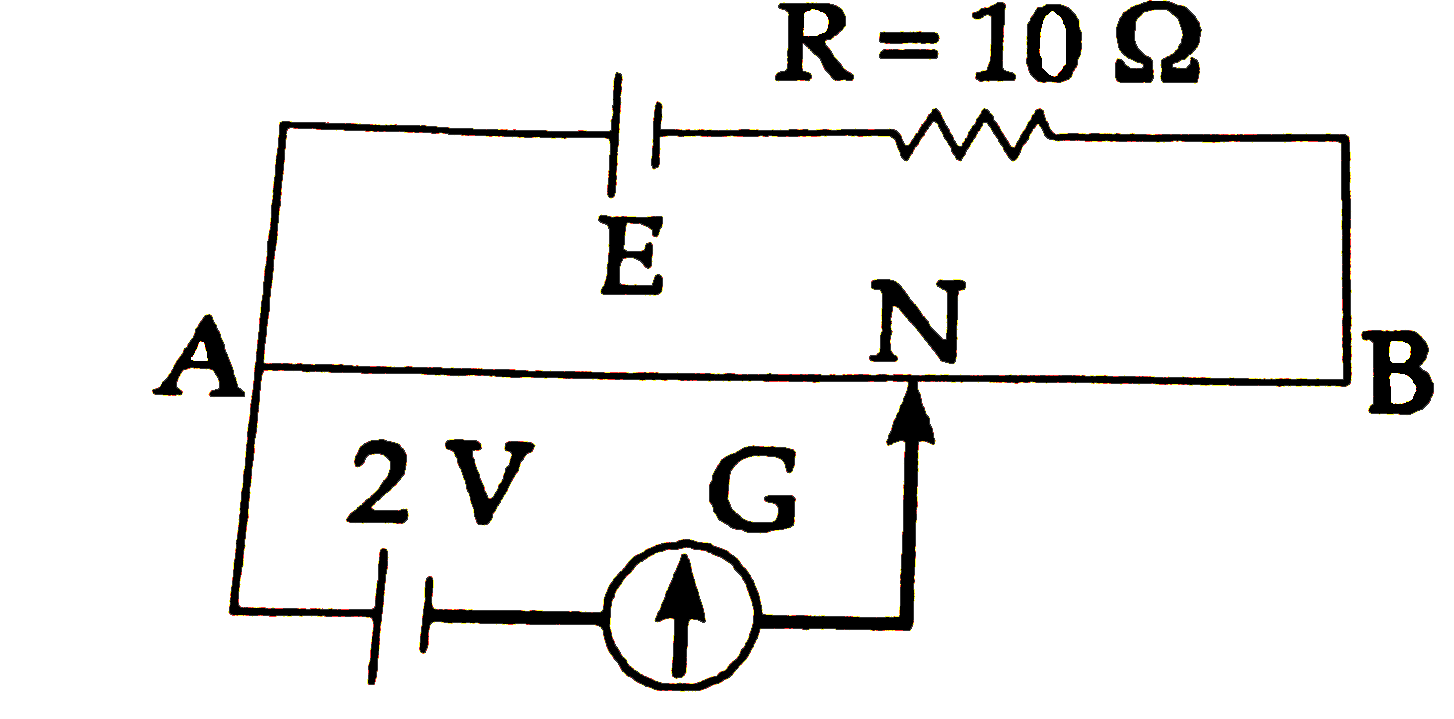(i) State the principle of working of a potentiometer.
(ii) In the following potentiometer circuit AB is a uniform wire of length 1 m and resistance 10Ω
Calculate the potential gradient along the wire and balance length AO (=l)

(i) When a constant current flows through a wire of uniform cross section the fall of potential is directly proportional to the length of wire .
(ii) Total resistance of primary circuit =15 + 10 =25Ω
Current in wire AB,I=2/25=.08A
P.D . across wire =.08 × 10 = 0.8V
Potertial gradient =0.8/100=0.008Vcm−1
Resistance of secondary circuit =1.2+0.3=1.5Ω
Current I = 1.5/1.5=1A
Current in 0.3 Ω resistor = 1A
P.D. across 0.3Ω resistor = 0.3 V
Length AO=0.3V0.008=37.5cm
Similar Questions
In the following potentiometer circuit AB is a uniform wire of length 1 in and resistance R the potential gradient along the wire and balance length AO (= l).

View SolutionA current of 1.0 mA is flowing through a potentiometer wire of length 4 m and of resistance 4Ω, find the potential gradient of potentiometer wire
View Solution
Knowledge Check
A potentiometer consists of a wire of length 4 m and resistance 10Ω. It is connected to a cell of emf 2V.The potential gradient of the wire is
A0.5 V/mB2 V/mC5V/mD10V/mIn a potentiometer circuit there is a cell of e.m.f. 2 volt , a resistance of 5 ohm and a wire of uniform thickness of length 1000 cm and resistance 15 ohm . The potential gradient in the wire is
A1500V/cmB35000V/cmC11000V/cmD110000V/cmA potentiometer consists of a wire of length 4 m and resistance 20Ω . If it is connected to a cell of emf 20 volt, the potential difference per unit length of the wire will be
A0.5Vm−1B2Vm−1C5Vm−1D1.0Vm−1
A potentiometer wire is 10 m long and has a resistance of 18Ω. It is connected to a battery of emf 5 V and internal resistance 2Ω. Calculate the potential gradient along the wire.
View SolutionA potentiometer consists of a wire of length 4 m and resistance 10Ω. If is connected of cell of emf 2V. The potential difference per unit length of the wire will be
View SolutionA resistance of 990Ω and a cell of emf 2 V is connected in series with a potentiometer wire having a length 2 m and resistance 10Ω. The potential gradient along the wire will be
View SolutionIn figure AB is a potentiometer wire of length 10 m and resistance 1Ω. The balancing length for 2V potential drop is 18 m. The e.m.f. of the battery E is

View SolutionA potentiometer wire has a length 2 m and resistance of 10Ω. It is coonnected in series with a resistance of 990Ω and a cell of e.m.f. 2 V. The potential gradient along the wire is
View Solution

